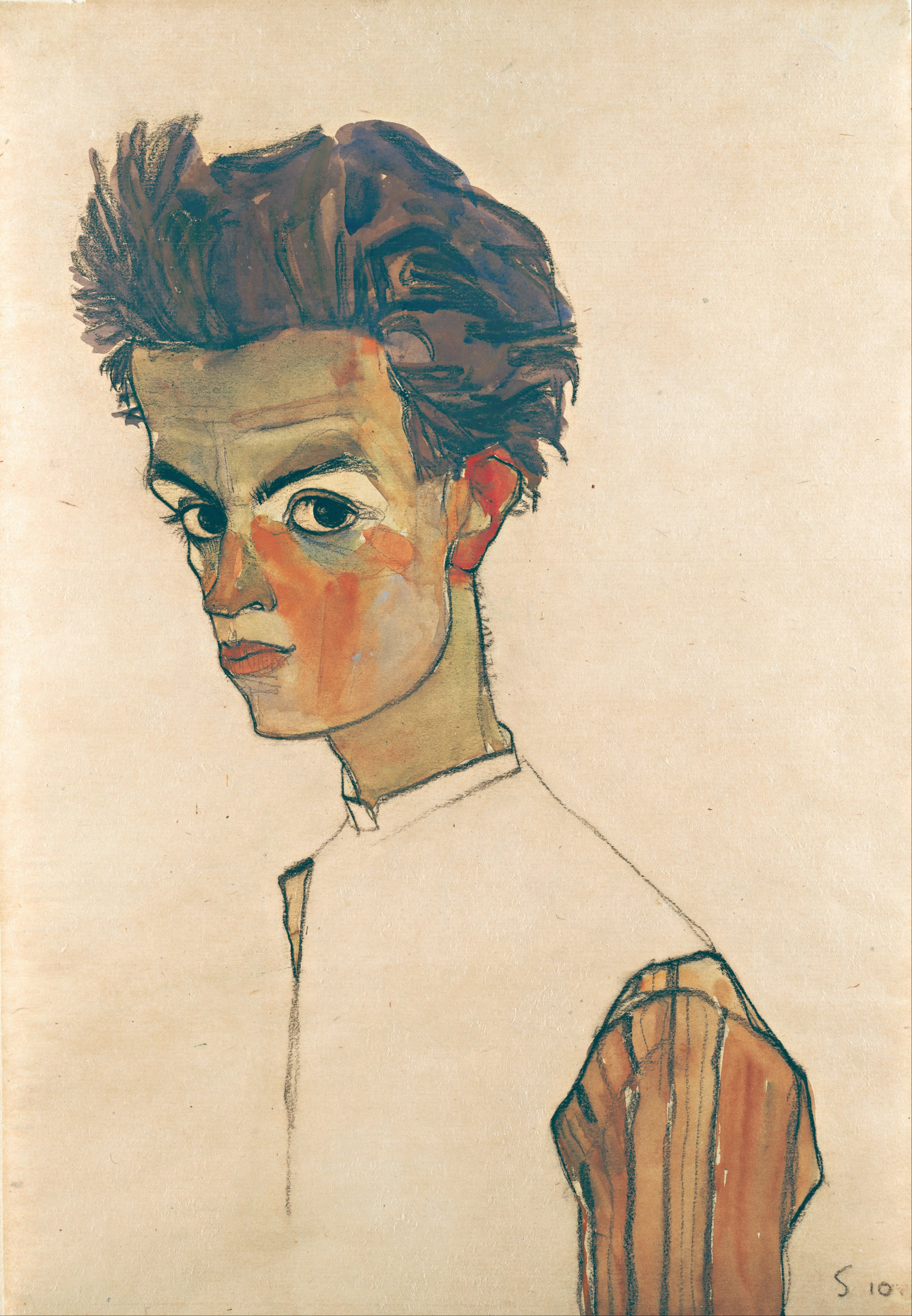You may know that I really love Egon Schiele's works. I was stunned when I found this watercolor—it is so different from what we usually regard as being in Schiele's style. It is not surprising to realize that this work was executed in 1908 when the artist was just 18. That same year, while a student at the Vienna Academy of Fine Art, Schiele finally met Gustav Klimt, whose work and precepts had already greatly inspired him. This event was something of an epiphany for the young man, who, as a result of his master’s lessons, would for some time retain a feel for ornamentation and an acute awareness of negative space.
This watercolor showcases an avant-garde composition characteristic of Schiele's early works, where the figure appears to be suspended in space, gently floating against the backdrop of the blank paper, mirroring a state of rest in a void. This piece stands at the intersection of Jugendstil (Art Nouveau) influences and the nascent shift towards Expressionism, a transition that became increasingly evident in Schiele's art from 1910 onwards. Unlike his later work, the face of the model lacks the raw, vivid materiality marked by the signature marbling of green, blue, and red that Schiele would often employ to depict human bodies. Furthermore, the woman's pose does not yet delve into the overt eroticism that would characterize many of his subsequent works on paper.
Nonetheless, the drawing's expressively contorted lines hint at the more complex and arguably tormented style that Schiele would continue to refine throughout his career. This early work, therefore, not only reflects the artist's experimentation with form and space but also foreshadows the distinctive approach to human expression and body language that would define his oeuvre.
One year after executing this work, in 1909, Schiele left the Academy of Fine Art. His departure gave him greater freedom to devote himself to his artistic explorations and to assert his iconic style.
P.S. Schiele's works are presented in our stunning, golden Vienna Secession Planner. :) It's designed to accommodate your schedule, regardless of the time of year.
P.P.S. Egon Schiele's art is as fascinating as it is disturbing. His work is on the verge of eroticism and pathology! If you are ready for even more of his art, see the articles below.

.jpg)
 Egon Schiele
Egon Schiele